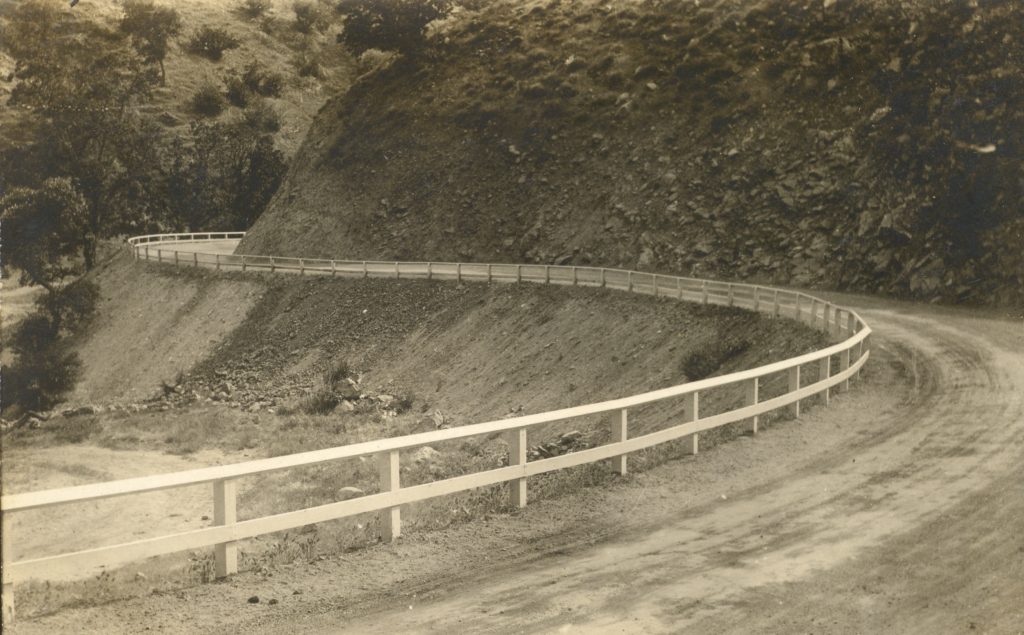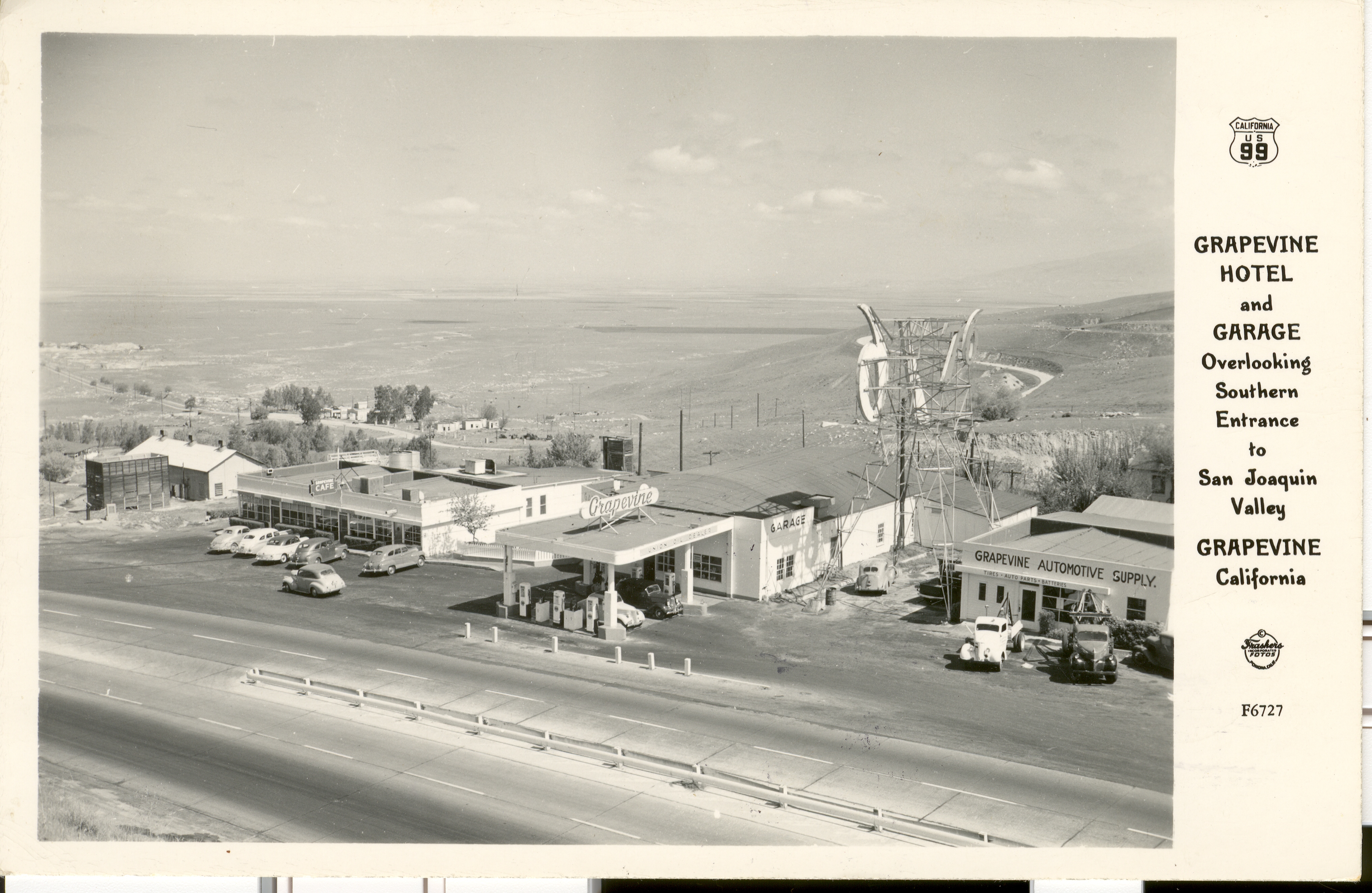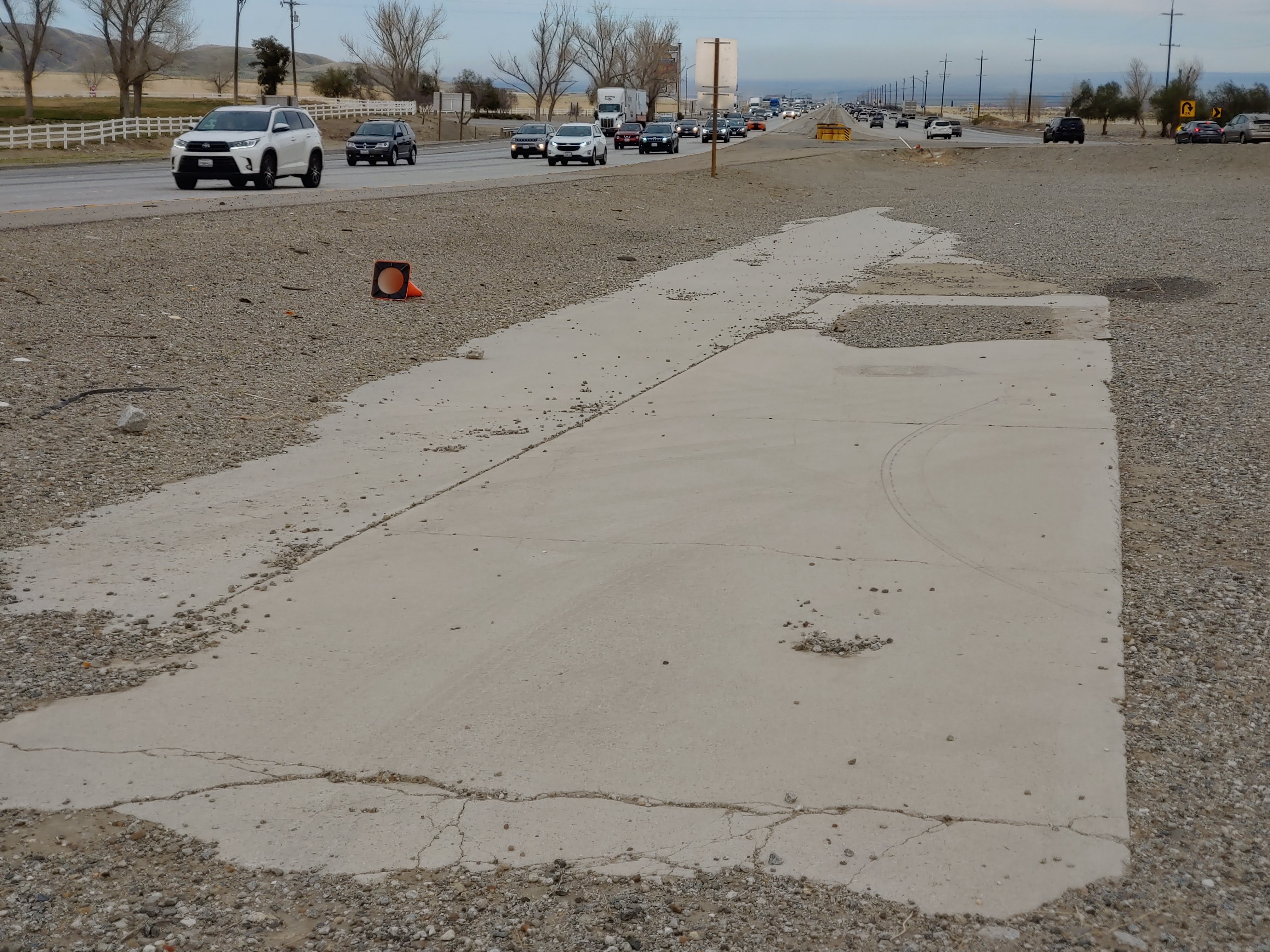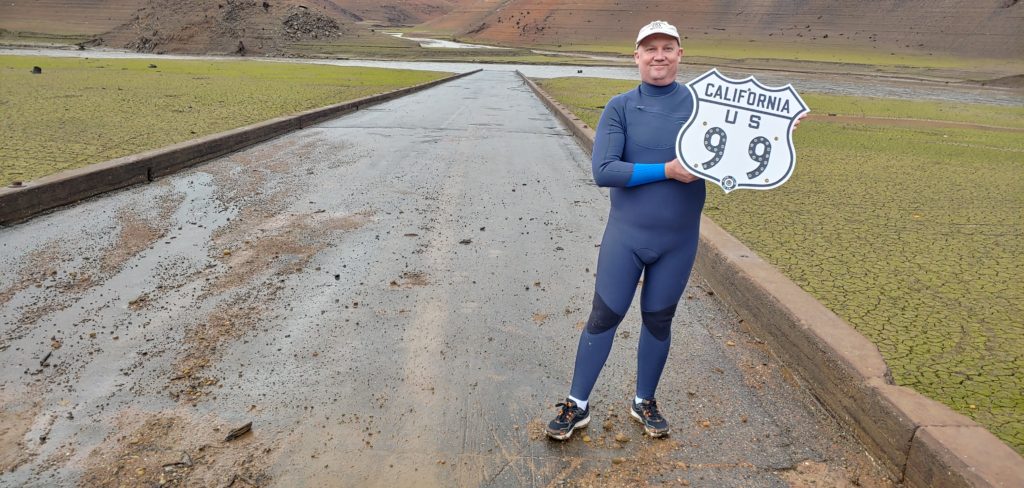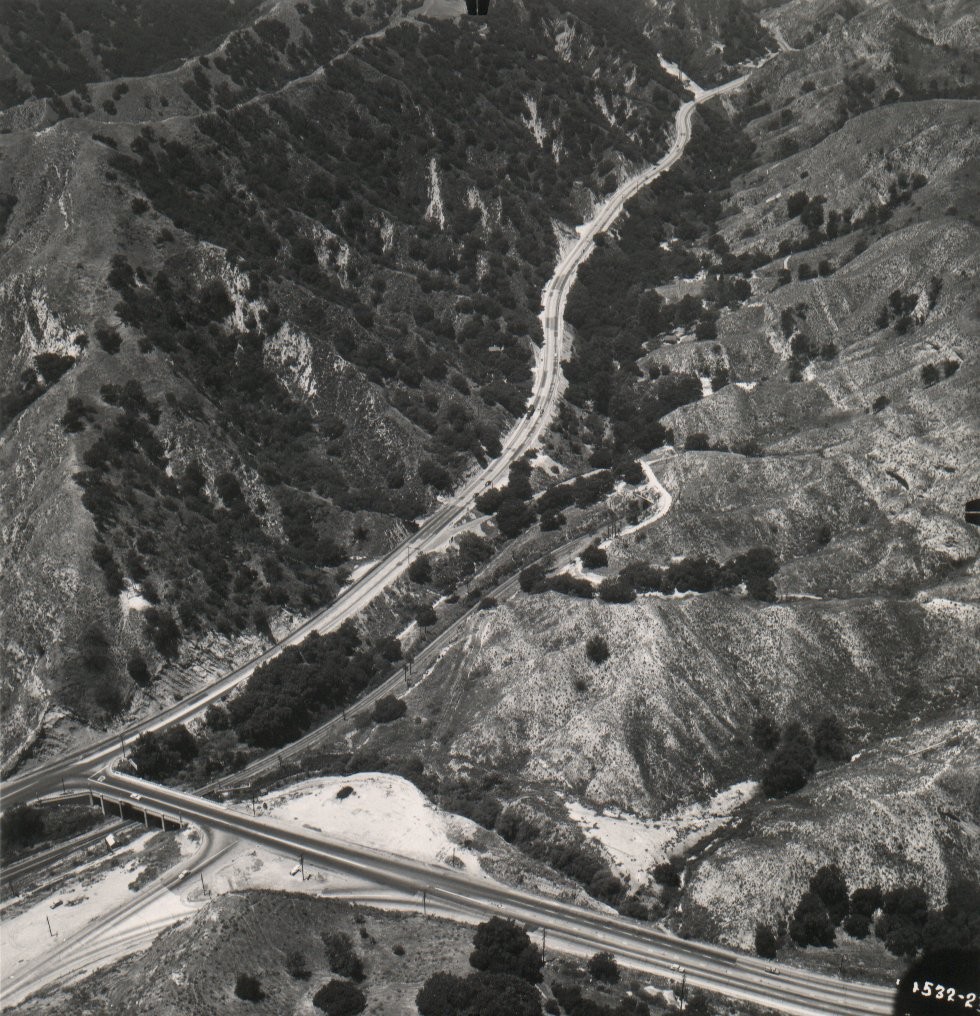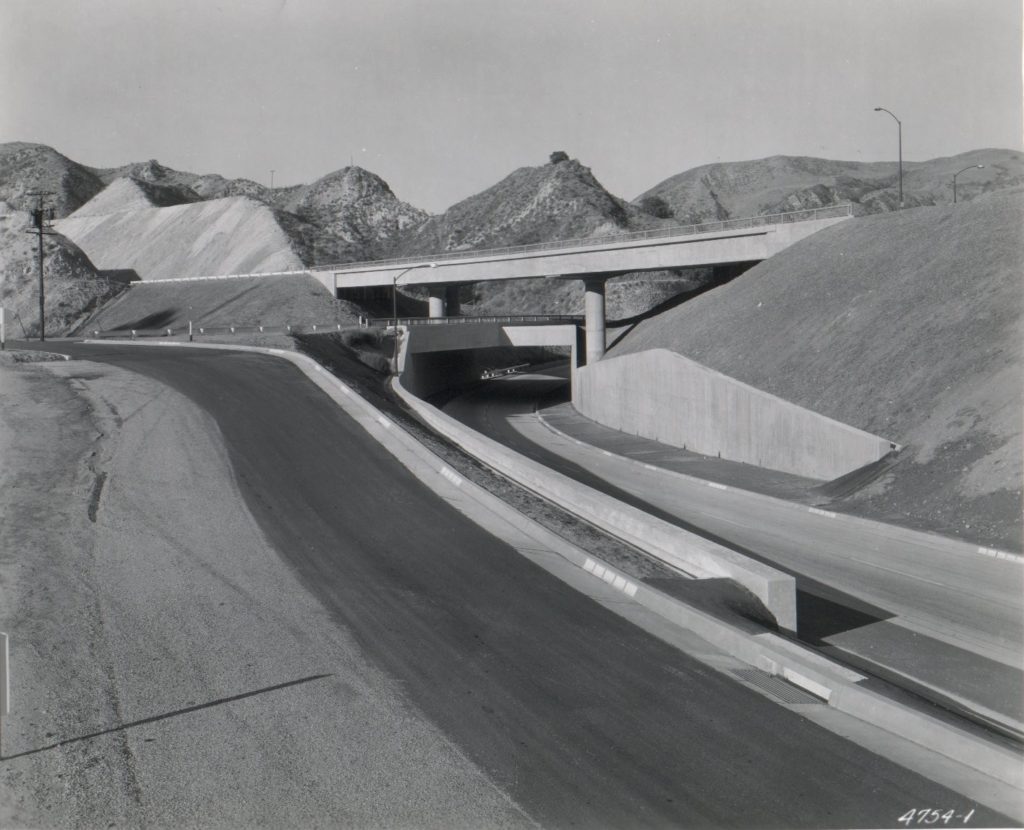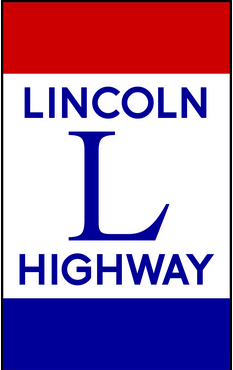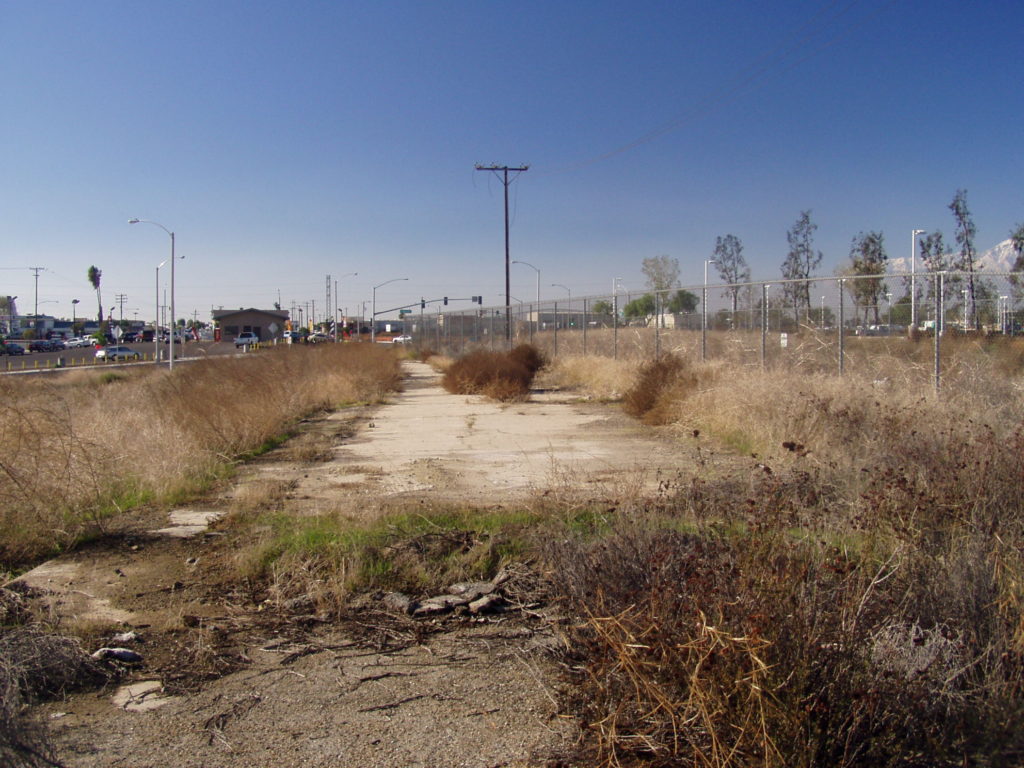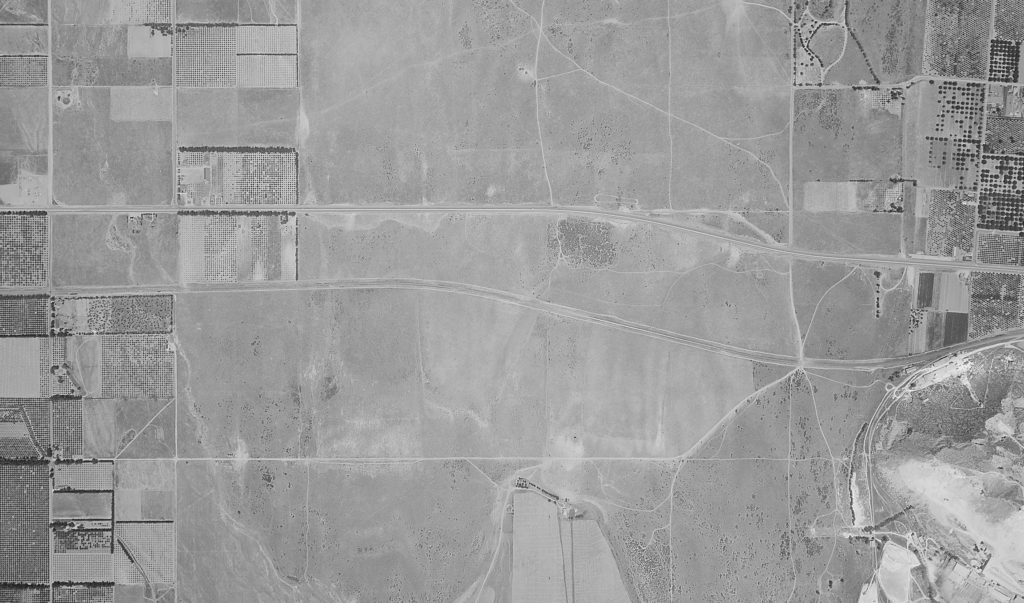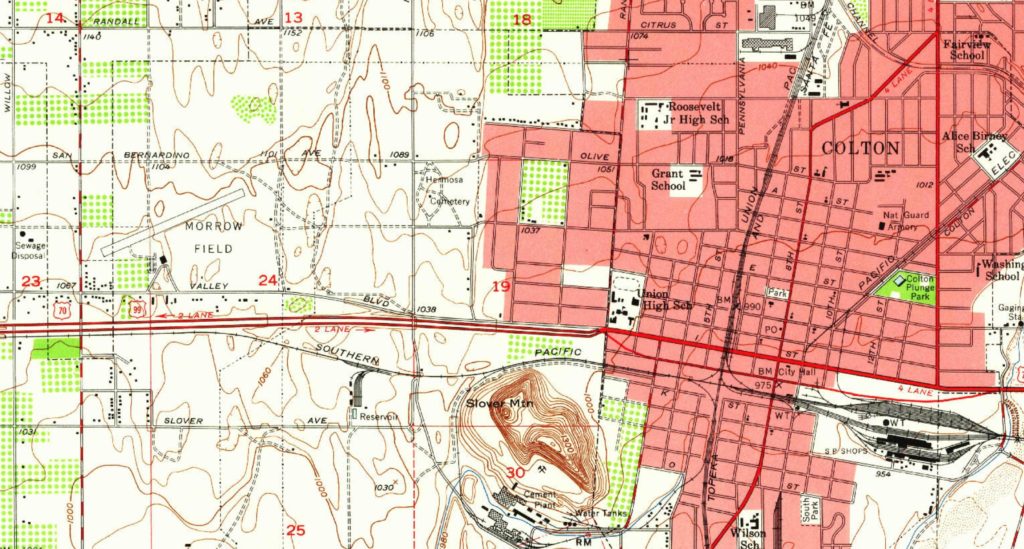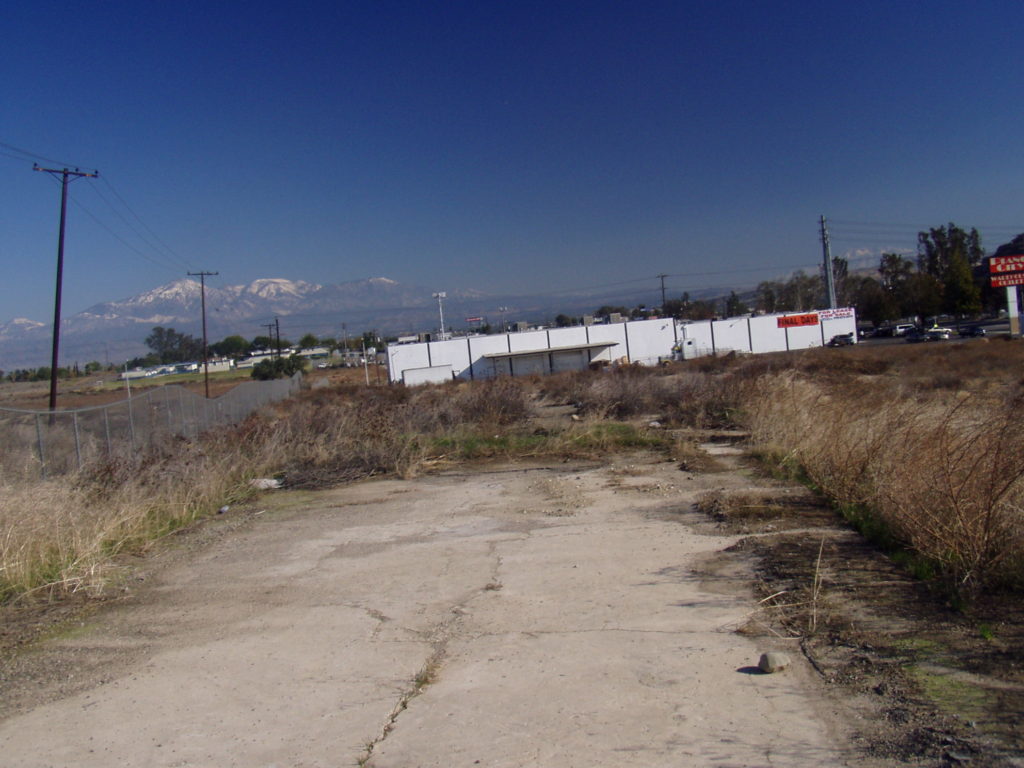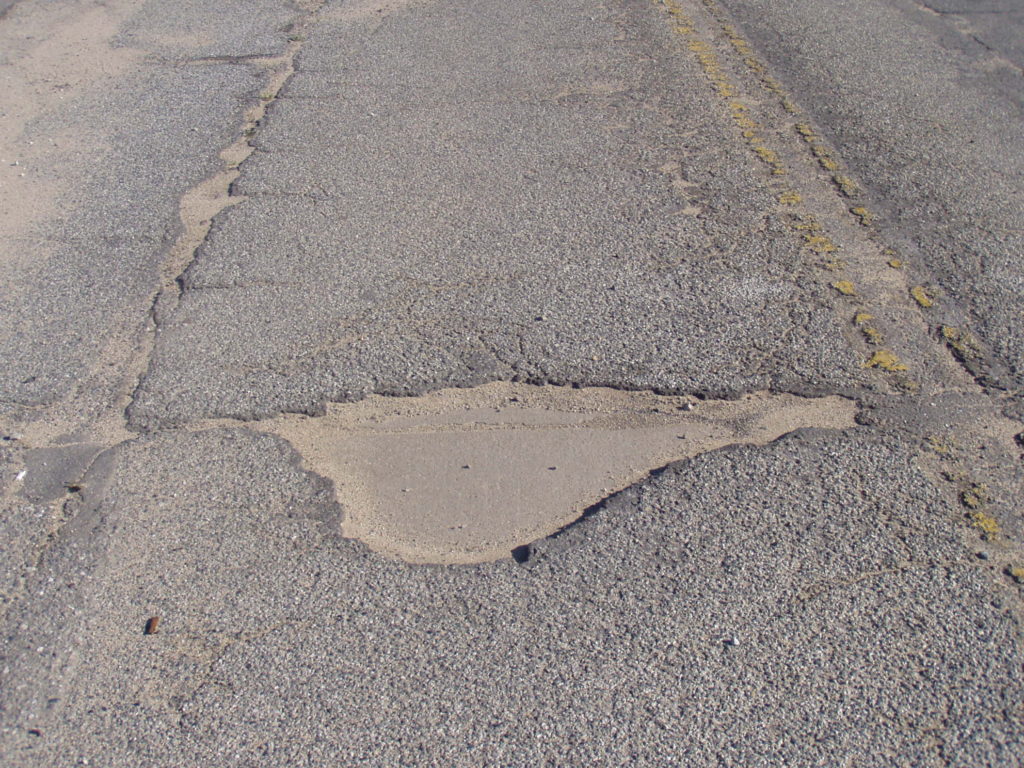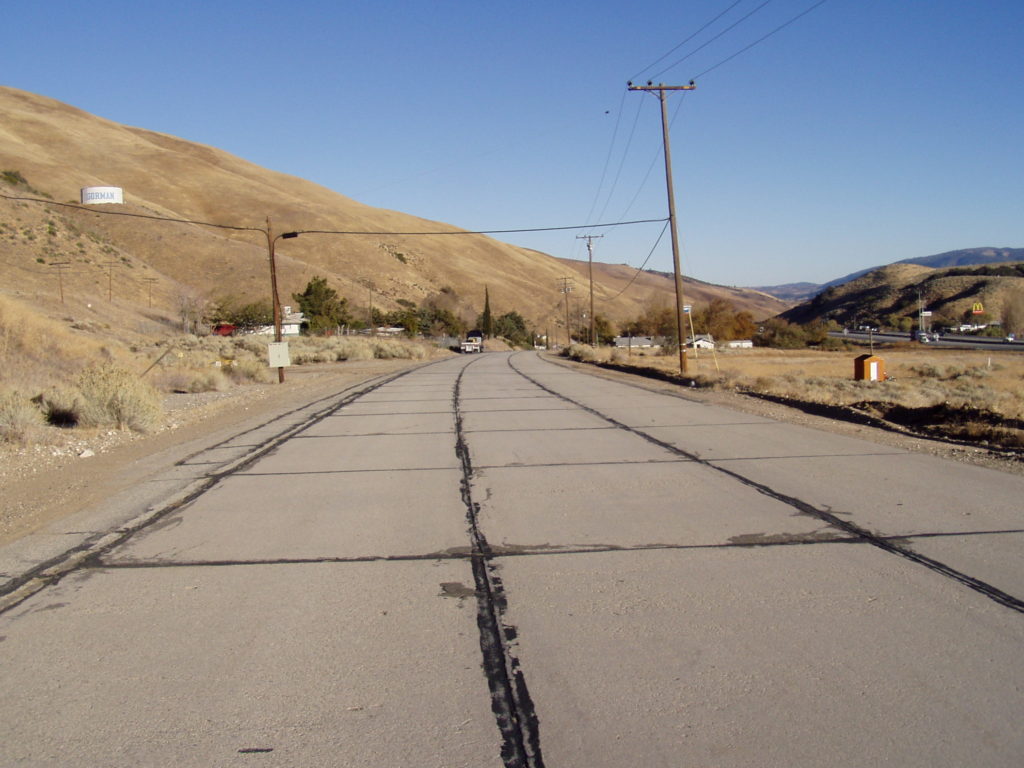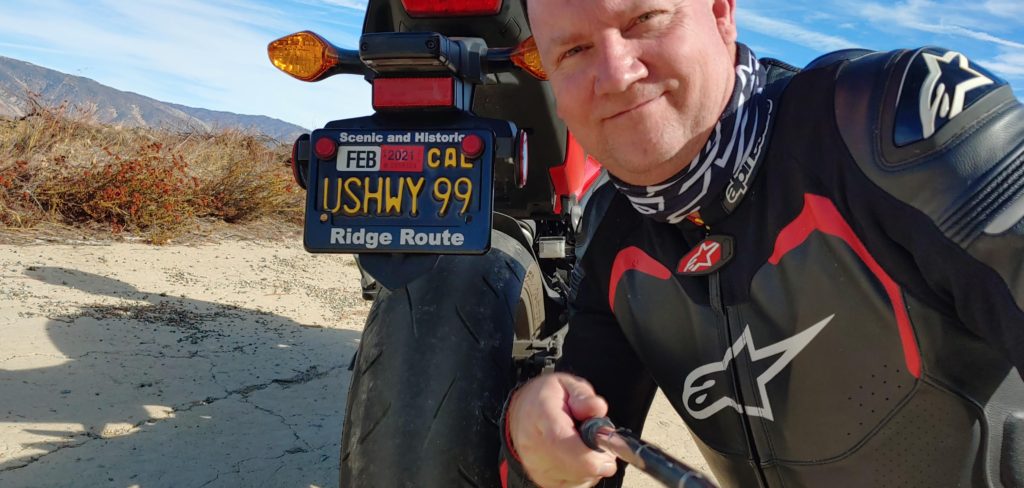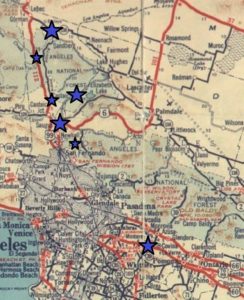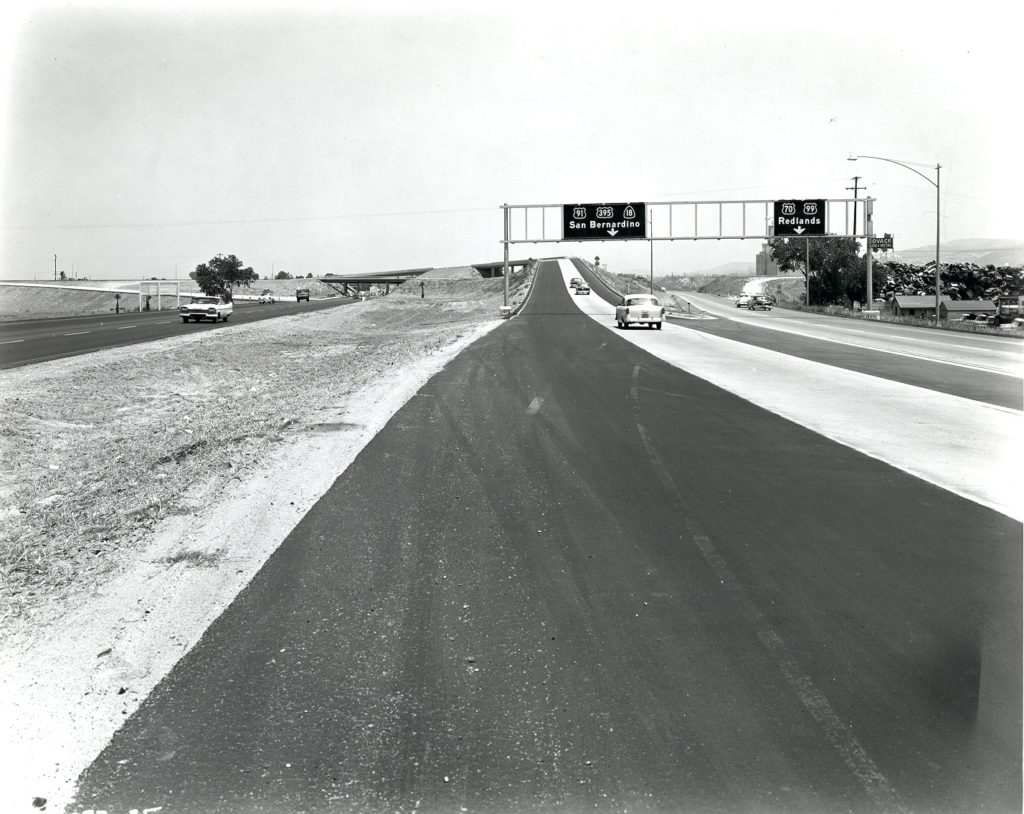A Brief History of Grapevine Canyon
in Kern County and US Highway 99 – Part 1
by
Michael F Ballard
1914 – 1933
Grapevine Canyon, or Canada De Las Uvas, was named for the wild grapes that grow on its slopes by Spaniards in the 1700′s. The town of Grapevine has been a major stop along this highway ever since the Ridge Route was built in 1914. This first alignment was one of the most torturous sections of US 99 in Southern California. It had more than a few very sharp curves, some of which ended up with names such as “The Loop” and “Deadman’s Curve”. Both of those curves still exist today, though partially removed and cutoff from the new roadways. In 1915, the grade was oiled creating a more solid, albeit temporary, roadway. Grapevine Grade received its first concrete pavement in 1919, a “full” 20 foot slab with curbing and little in the way of a shoulder. The original location of the “town” of Grapevine was at the bottom of the grade. It consisted of a motel, store, gas station, and restaurant. In 1926, work commenced to “daylight” some of the sharper curves along the grade, which increased sight-distance and did help to reduce collisions. It didn’t, however, reduce the curvature of the road.
1933 – 1943
In 1933, a new alignment of US 99 was built. It ran along the current southbound lanes of I-5 for most of the grade. Deadman’s Curve and the Loop were eliminated at that time. When the concrete was first poured, only two lanes were built. About a year later, the third lane was added making the center lane the passing lane. Since the original location of Grapevine was bypassed, it was partially relocated onto the new grade, this time in the canyon. While it was rather conveniently located, it did suffer from one fatal flaw. It was near the bottom of a very long, steep grade, and on the outside of a curve. As a result, runaway trucks smashed through on a few occasions.
Shown above, a small section of concrete is visible adjacent to the southbound lanes of I-5. A small color difference can be noticed between the two lanes that are visible. This difference is due to age. The lanes to the left were constructed in 1932 when Grapevine Grade was realigned, bypassing the original 1914 Ridge Route grade. This was built as two lanes as a temporary measure to expedite the opening of the new route. Right after it was opened, a third lane was added, the lane on the right, creating a three-lane roadway with a common passing lane in the center, or “suicide lane”. This condition persisted until 1943 when the road was widened yet again to four lanes. In 1958 – 1960, these lanes were bypassed by the current southbound lanes of I-5. Today, they remain as one of the last remnants of the 1932-1958 version of Grapevine Grade.
To be continued in our May / June 2022 Newsletter
March 2022 Presentation
Join us on Tuesday, March 8, at 6pm for a presentation on Lake Shasta and Environs by Michael Ballard. We will be sharing photographs from our November 2021 trip to the Lake Shasta area showing the low lake level as well as some additional photos of the surrounding area.
Please register for the presentation using the link below:
https://us06web.zoom.us/meeting/register/tZApc-2hqz4jHtJ5mqJslfq-rk81UMiHvNrQ
The Pine and the Palm
Just south of Madera, 1.75 miles south of Ave 12, and 2.1 miles north of Ave 9 (or more specifically at 06-MAD-99-05.7), there lies a pine tree and a palm tree in the median of Highway 99. It has been there since the 1920’s and marks the former halfway point in California. The Palm Tree, a Canary Island Date Palm, represents Southern California and the Pine Tree, a Deodor Cedar, represents Northern California. In 2005, the pine tree fell down but was replaced by Caltrans in 2007 as this is a somewhat historic marker.
We, the Historic Highway 99 Association of California, intend to have signs placed in both directions at this location to mark the historic site. While it might not exactly be the “halfway” point in California, it is close enough and has been there since the 1920’s. We are looking to work with local agencies such as the County of Madera, Caltrans District 6, City of Madera, and others to gain support and assistance with this effort. We already have a design for the sign and cost estimates for its fabrication.
If you would like to be involved in this project (03-MAD21002), let us know! We can use help either through donations of labor or money. Any donations are likely tax-deductible as we are a 501c3 organization.
99 Alert – William S Hart Park in Santa Clarita
One of our members and local historians, Evan Decker of Santa Clarita, has brought to our attention something concerning a park in his area. William S Hart Park, the former home of the silent film actor, is currently a park owned and administered by Los Angeles County. This arrangement is due to the stipulations in the will of William S Hart, who deeded the land and associated structures in perpetuity to Los Angeles County.
The City of Santa Clarita, in an effort spearheaded by the current major Laureen Weste is looking to take over the park. By itself, it would seem like a “home rule” sort of issue, which can be a good thing. However, the City of Santa Clarita has a poor track record of preserving history and keeping it safe. This has been shown with the “disneyfication” of the central business district of Newhall, among other things. We feel this change would be a detriment to the historical value of Hart Park and would not be to its best interest.
If you would like to help with preventing the City of Santa Clarita from taking over William S Hart Park, Even Decker has set up an online petition to sign. He also strongly recommends contacting the office of Los Angeles County Supervisor Kathryn Barger and tell her you’re against this project.
We, the Historic Highway 99 Association of California, only want to help preserve and protect the history along Highway 99. Newhall was one of the towns along the earliest alignment of US 99. Hart Park represents a part of that early history.
Please sign the petition created by Evan Decker to tell the City of Santa Clarita that you want the park kept as-is and not in City hands.
Membership and Donations
As we slowly ramp up our efforts to get Historic Route signage placed in various cities and historic locations such as the Pine and Palm, we need your support. You can do this by becoming a member, donating money, or by volunteering with our Association. We are a 501(c)3 non-profit corporation and your donations may be tax deductible. Why not help reduce your tax burden for 2023 by donating prior? We can also use your help with some of our projects, website, and our newsletter. Having someone local to act as our ambassador or liaison would be of great help. We are also working out how to handle renewals for existing members. Initially, we had planned to have all memberships expire at a specific time. At this time, we are looking to have memberships expire at the end of the month initially obtained. We will be sending out a letter to our current members to explain how to renew. Join now and help us grow!
We do wish to thank all those that have donated and become members thus far. Our most recent project in Madera couldn’t have happened without your support!
Featured Photo
Recently, a section of 1930 US 99 was rediscovered in the Santa Clarita Valley. Thought lost since the 1960’s, a small section of the 1930 “Newhall Alternate” was found along a residential street south of Lyons Avenue. This roadway, at least a portion of it, represents one of the few remaining sections of the 1930 roadway north of Calgrove Blvd. In 1967, I-5 was constructed here and the new road was shifted a little to the west, leaving this road, now known as Hawkbryn Ave, as a frontage road. Traces of the 1930’s concrete can still be detected today. This section was discovered using comparisons between aerial photography and the construction plans from 1949 and 1967.
Despite having traversed this area many times, I never thought to look here. Always keep your eyes open, for you never know what you might find.

